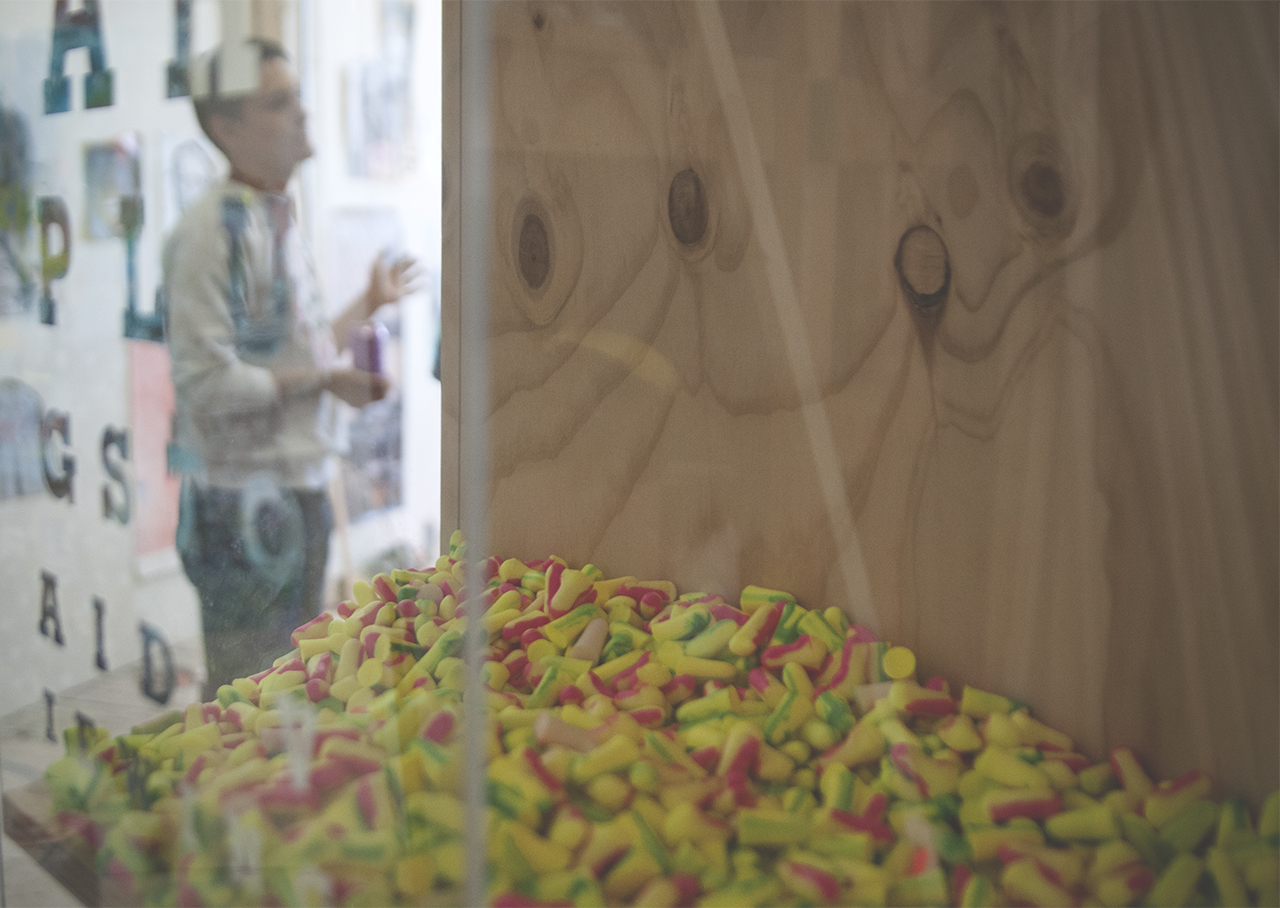Inside\Within is a constantly updating web archive devoted to physically exploring the creative spaces of Chicago's emerging and established artists.
Support for this project was provided by The Propeller Fund, a joint administrated grant from Threewalls and Gallery 400 at The University of Illinois at Chicago.

Search using the field below:
Or display posts from these tags:
3D printing 3D scanning 65 Grand 7/3 Split 8550 Ohio 96 ACRES A+D Gallery ACRE animation Art Institute of Chicago Arts Incubator Arts of Life audio blogging Brain Frame CAKE Carrie Secrist Gallery casting ceramics Chicago Artist Writers Chicago Artists Coalition Chicago Cultural Center Cleve Carney Art Gallery Clutch Gallery Cobalt Studio Coco River Fudge Street collage collection Columbia College Chicago Comfort Station comics conceptual art Contemporary Art Daily Corbett vs. Dempsey Creative Capital DCASE DePaul University design Devening Projects digital art Dock 6 Document drawing Duke University dye Elmhurst Art Museum EXPO Chicago Faber&Faber fashion fiber Field Museum film found objects GIF Graham Foundation graphic design Harold Washington College Hatch Hyde Park Art Center illustration Image File Press Imagists Important Projects ink installation International Museum of Surgical Science Iran Jane-Addams Hull House Museum jewelry Joan Flasch Artist's Book Collection Johalla Projects Julius Caesar Kavi Gupta Links Hall Lloyd Dobler LVL3 Mana Contemporary metalwork Millennium Park Minneapolis College of Art and Design Monique Meloche Museum of Contemporary Art Chicago (MCA) Museum of Contemporary Art Detroit (MOCAD) Museum of Contemporary Photography (MoCP) National Museum of Mexican Art (NMMA) National Resources Defense Council New Capital Northeastern Illinois University Northwestern University Ox-Bow painting paper mache Peanut Gallery peformance Peregrine Program performance photography PLHK poetry portraiture printmaking public art Public Collectors publications Renaissance Society risograph rituals Roman Susan Roots&Culture SAIC screen printing sculpture Sector 2337 Shane Campbell Silver Galleon Press Skowhegan Slow Smart Museum Soberscove Press social practice South of the Tracks Storefront SUB-MISSION Tan n' Loose Temporary Services Terrain Terrain Biennial text-based textile textiles The Banff Centre The Bindery Projects The Cultural Center The Franklin The Hills The Luminary The Packing Plant The Poetry Foundation The Poor Farm The School of the Art Institute of Chicago (SAIC) Threewalls Tracers Trinity College Trubble Club University of Chicago University of Illinois at Chicago (UIC) University of South Florida at Tampa Valerie Carberry Vermont Studio Center video weaving Western Exhibitions wood carving woodwork Yellow Book Yollocalli Arts Reach zinesInside\Within is produced in Chicago, IL.
Get in touch:
contactinsidewithin@gmail.com
Stevie Hanley’s Perverted Kitchen
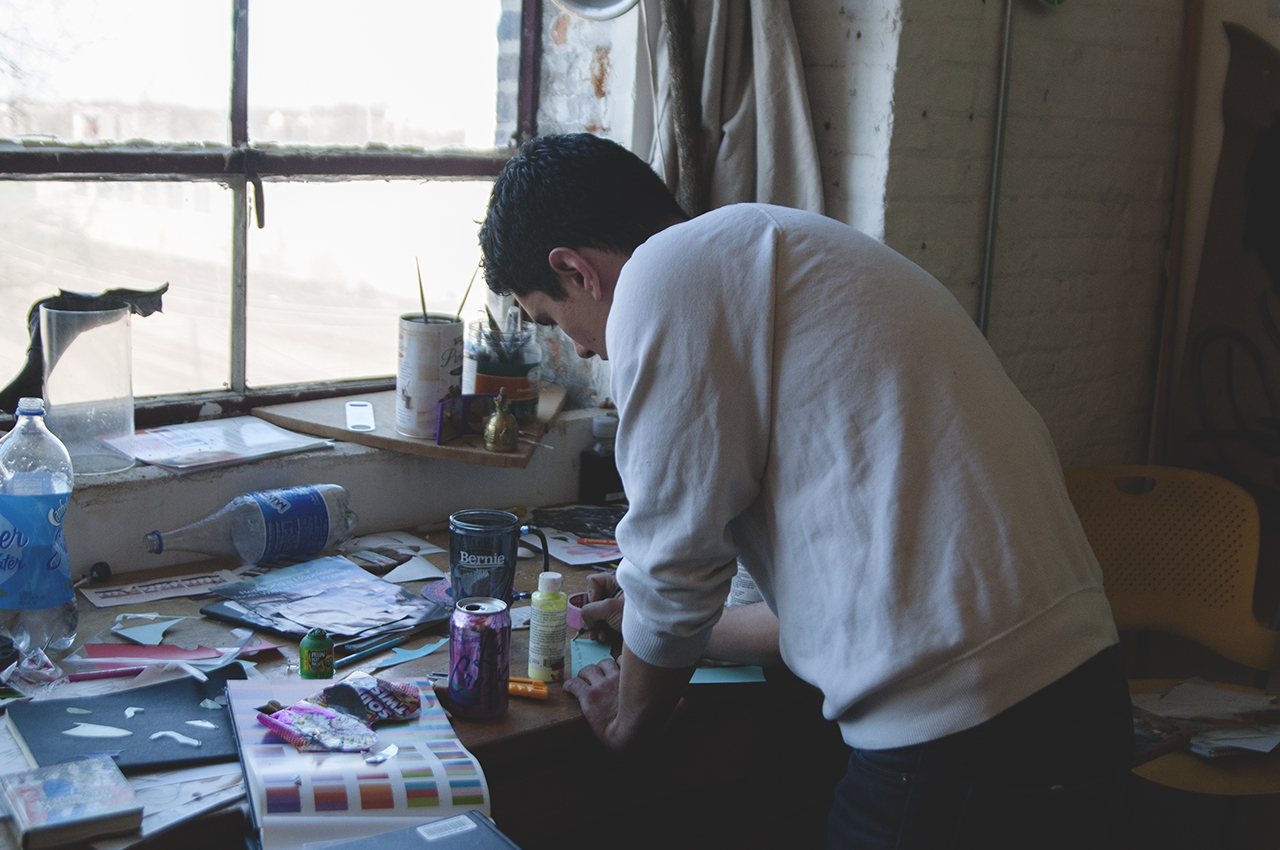
Stevie produces work that productively confuses the viewer, drawing one in with normalized objects and then introducing them to chaos. Referring to his studio as the Pervert Kitchen, Stevie creates work that transforms elements of shame into power, heightening previously demeaned spaces into areas of unlimited experimentation. Giving himself the authority and permission to create messy objects that might only delight his own senses, he pushes his work to stray from narrow notions of beauty.
I\W: Can you explain your obsession with sacred spaces and how those spaces appear in your practice?
SH: Sacred spaces were an early fixation of mine. I feel like my work has shifted away from that somewhat. Tangentially, the work has stayed focused on questioning what is sacred and what is profane. Maybe beyond all the jargon it’s just a little boy who misses a place that made him feel safe. I was raised very religiously. Actually, you could say I was in large part raised by the church. My parents were teenage drug addicts, the church was solid. After a failed Mormon-led sexual reorientation therapy I left the church. For quite a while I was a proud self-righteous atheist, to the extent of being very anti-religious. Somehow I found myself drawn again to religion, this time via my undergraduate studies. I started reading a lot about religion and what purpose it serves, why we invented it, essentially religion as a technology. There is an openness to it that I like, or rather the capacity to relate oneself to the infinite unknown. I don’t want to say I’m spiritual, but I also wouldn’t say that I’m not spiritual. That word sounds so gross. I do however like that spirituality seems to offends academia, and I’m really into offending people!
Back to your question of sacred spaces. I think for me it has to do with empathy. I like the term radical empathy. While growing up I was very afraid and ostracized for being queer and treated like a monster. It is very easy to dehumanize people on so many fronts. More than being easy, it is occurring constantly. The notion of sacred versus profane is a violent binary, most violent against the marginalized. So when I think of sacred spaces, I am also thinking about sex spaces, gutters, pristine sheets and how I can create a productive confusion, something that holds the viewer, whether by mean of beauty or novelty, and simultaneously challenges or tests one’s assumptions.

How does your work deal with harnessing the experiences of shame and transforming them into power?
I read this book called Insult and the Making of the Gay Self when I was in my early 20s and I found the book fascinating. There is a point where the author, Didier Eribon, talks about the possibility that shame could actually be reversed or flipped and used as an energy source, using the examples of drag queens and clowns. There is a power behind that. Humor is very connected to shame. It is a release. I found that really interesting because I think we all have a lot of shame. I think shame serves its purpose; horrible things would happen if people were completely void of shame. Shame is also incredibly destructive and people have too much of it. This concern is perhaps at the core of my practice. The idea of flipping shame into a power is exciting to me because I think it is a tool that people with very little power can use. I use that to give myself permission in the studio. I can make work that doesn’t need to be good or accepted by other people. I love sharing my work and seeing how people interact with it, but I have also given myself permission to do the wrong thing, embrace shame, offend. It’s from that chthonic space that I draw my energy and creativity. I do this thing where I make a drawing and I promise myself at the beginning that no matter what, no matter how good it is or how bad it is, I will destroy it.
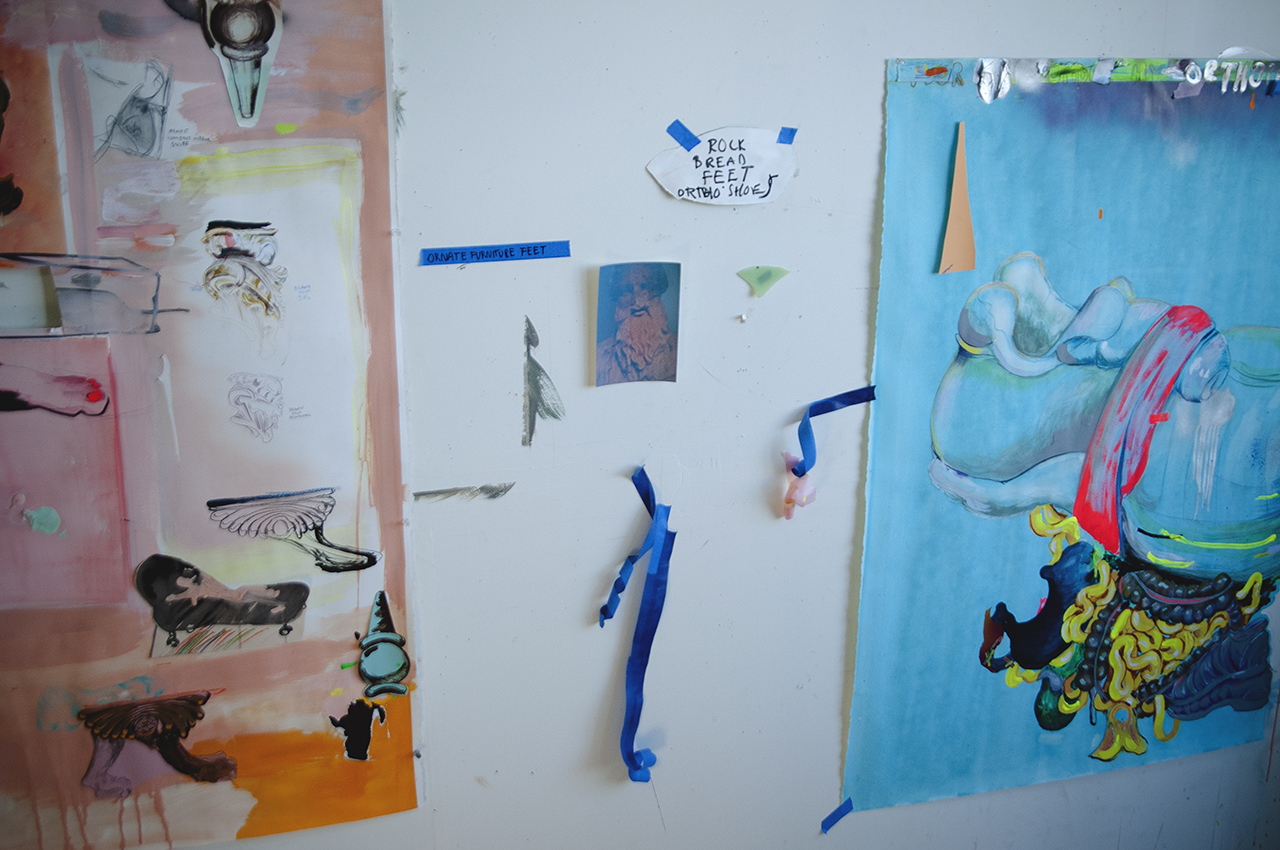
How has your work tended to center around activities within the kitchen and other domestic spaces?
I refer to my studio as the Pervert Kitchen. I was at a wedding a couple of years ago in California, and during the ceremony this older intoxicated suburban housewife psychic started giving out readings. She pointed at me and said I just wanted a man to take care of me and to be in the kitchen. I was so upset and angry by this statement. I thought about it obsessively for a long time afterwards. Then I thought maybe she’s right! I started thinking “kitchen work” was a better model to think about my practice rather than this heroic masculine notion of the artist in the studio. A lot of crazy wonderful things can happen in a kitchen. For me it felt like more possibilities thinking of it that way. It’s all about how labor is framed, and historically that framing is racist and sexist. Why is it that almost any fucking thing done in an “Artist’s Atelier” is exalted and fetishized, whereas domestic labor, menial labor, service industry labor are not honored for their degree of creativity, innovation, and general importance? Choosing to make art from a kitchen rather than a studio, has a lot to do with my own gender anxiety and in finding power in spaces demeaned.
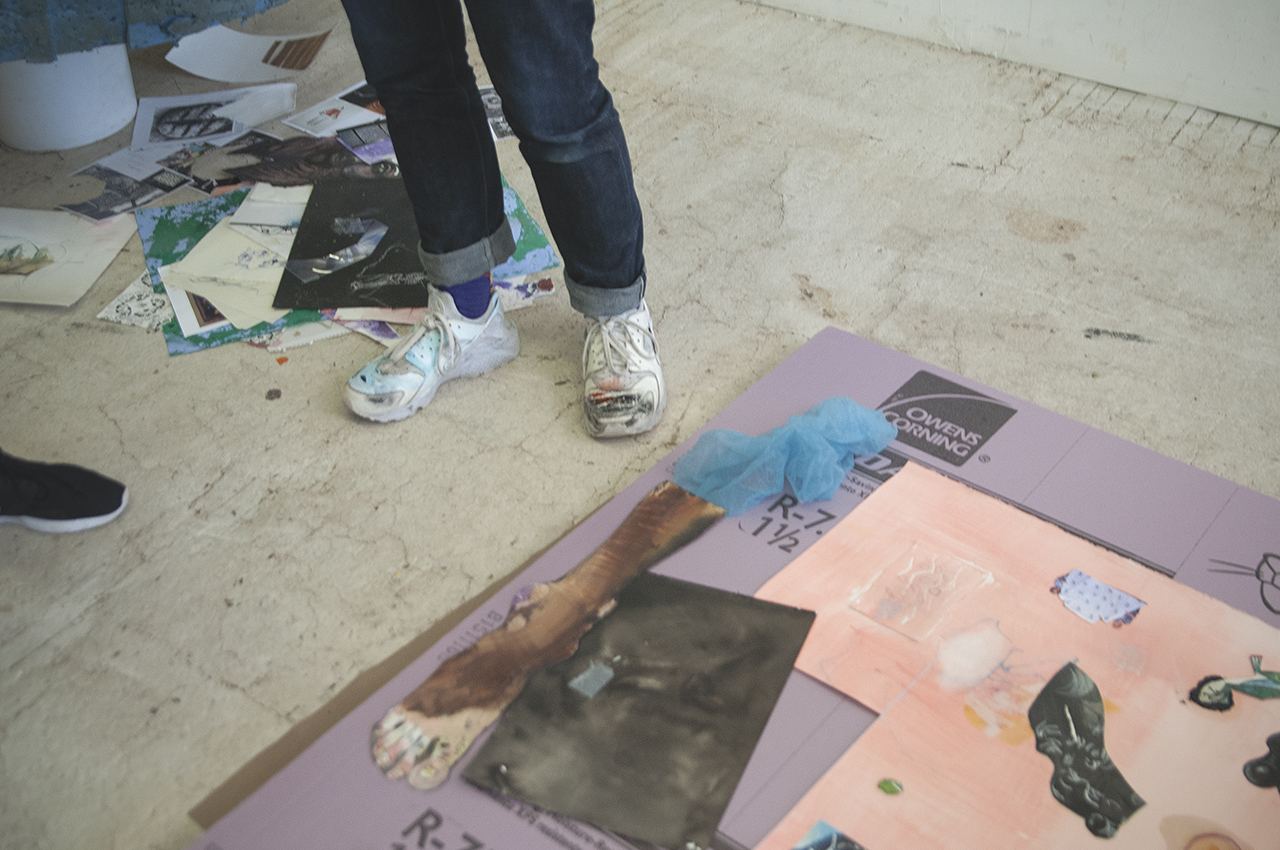
What kind of “perverted recipes” are you creating in the studio?
I like my work the most when the viewer can access something from their everyday life. I like to put an object such as an egg right next to something really exciting because I feel like it brings the viewer in deeply. I have been thinking a lot about making perverted cocktails. I play this game where I pick three things and challenge my bartender friends to make a drink out of it. It could be baby food, marshmallows, vodka, and then they have to make a drink that people would actually want to spend $14 on. I also work very superstitiously in the studio. I will drop a pencil on accident and the pencil will be pointing some place and then I will have to go work on that piece. I think it helps me because I will work on multiple things at the same time. I will look at my work in a mirror, photograph it, I will employ all of these techniques so I don’t get sucked too deeply into any one work. I think that is why I like working in a messy studio. There is crap everywhere and all of these weird things make their way into the work. If they were neatly organized I feel like it would happen much less.
I have given myself permission to do the wrong thing, embrace shame, offend. It’s from that chthonic space that I draw my energy and creativity.

What type of subjects have you been focusing on in the studio lately?
I have been thinking a lot about aliens orthopedics. What would they look like? Orthopedics is a medical specialty concerned with “correcting” or “enhancing” bodily ability. What a great site for a productive confusion that interrogates medical history, shame, perverting power or questioning power, what is alien, what might an aggressive punk orthopedics be? I have a more violent piece that shows a pair of orthopedics stomping on guts. However these crushed guts look more like a flower arrangement than something horrific. I was talking to a friend and they were saying that in a way, beauty is more contained than ugliness. The conventions of beauty somehow seem more tight, but the conventions of ugliness seems much more expansive. It seems more radical. Especially when talking about queer people who have been ostracized. This huge space that the greater public has written off as evil or bad is super rich with potential.
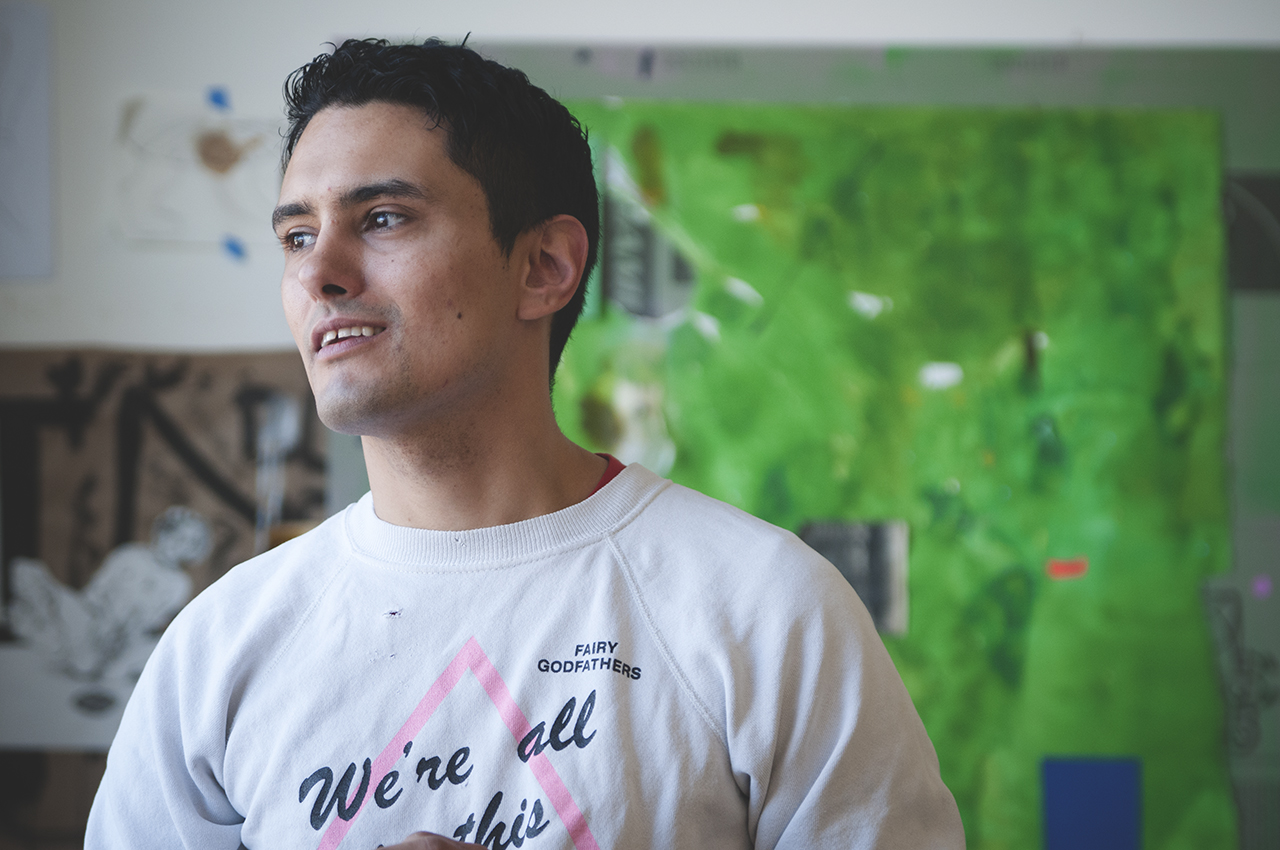

Were you experimenting with synesthesia before your solo exhibition at the International Museum of Surgical Science?
Yes, but I amplified my interest in it for that show. It is more about a messiness or a bleed, something to counter the notion that the senses are so neatly compartmentalized. This sensorial bleeding or confusion is the same sacrilegious game I’m playing with the profane/ sacred, with gender binaries, with violent systems of ordering in general that give false security, that ultimately become dogmatic and religious. Medicine is a contemporary religious system. At the beginning of the exhibition at the International Museum of Surgical Science I placed an elaborate earplug dispenser that read “earplugs to aide viewing,” convincing the audience that they were there to help them “see the show better.” However, once entering the exhibition space they encounter a video piece with two types of spiders crawling over the very earplugs they are wearing with a sound component by Caleb Yono. It puts the viewer in this contradictory space where they have the earplugs in but there’s this sound piece blaring made from the earplugs, earplugs as devices to create sound rather than cease sound. Furthermore, the spiders crawling over the same model of earplugs the viewer is wearing creates a specific itch or chill up the spine.
